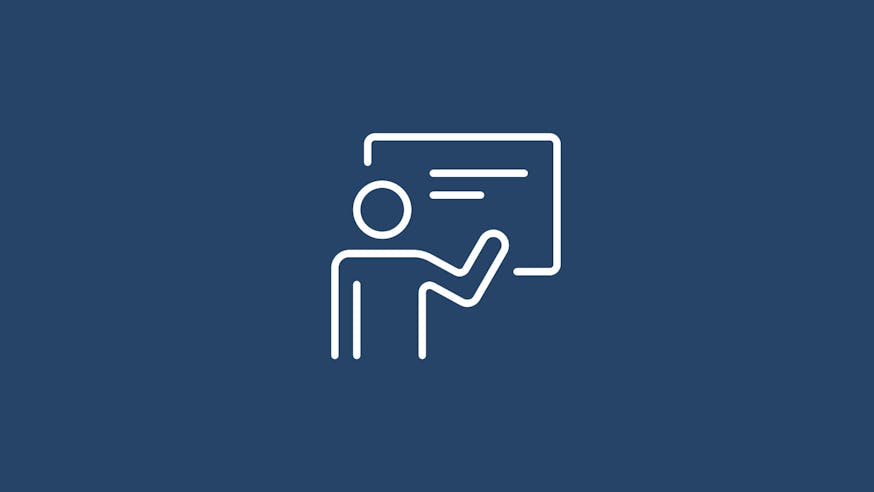Witness to Revolution
Unit 2: A Revolutionary Reminder in a Changing Nation
Aims & Objectives
The modular activities and extensions in this unit provide opportunities for students to:
- Examine various ways that leaders are remembered and the factors that shape remembrances of them.
- Evaluate the importance of objects in telling the stories of historic events and people.
- Explore how the visit of the Marquis de Lafayette in 1824 helped the country to remember the Revolutionary War and the ideals of the American Revolution.
- Consider how the Custis-Lee family story can help in understanding the complexities of the Civil War.
Materials
- Big Idea 2: A Revolutionary Reminder in a Changing Nation
- Virtual Museum Tour of the Museum of the American Revolution
- Object Card: Washington in Glory Jug (Museum of the American Revolution. Gift of James B. Richardson III)
- Object Card: Punch Bowl (George Washington’s Mount Vernon)
- Video: Lafayette Parade Banner
- Map: Lafayette’s Return Tour
- Worksheet: Label Template
Activities
Engagement Activities
These activities (5-10 minutes each) can be used as hook activities, introductions to concepts, or shorter lessons.
Objects and Memory
Ask students if there is an object from their past that sparks a memory or memories. What sorts of feelings do they feel when they look at that/those things? How does the object remind them of something or someone?
Remembering Leaders
Hand out a Post-it note to each student and ask them to write down one way that leaders are honored or remembered today (for example: with monuments, on currency, a book written about them, a city named after them, etc.).
Afterwards, invite students up to the front of the class to place their notes on a central location, like a blackboard. Then, invite them to read the Post-it notes of their classmates. After students have returned to their seats, engage them in conversation around the following questions:
- What are some ways that leaders are remembered today? Which ways are best for honoring someone and which are best for learning about them? What influences your answer?
- If you wanted to be honored or remembered, which way would you choose? What would be the advantage of your choice? Are there any disadvantages?
Mourning General Washington
Teacher Preparation: Prepare to project or display the object Washington in Glory Jug.
Teacher Note: Allegorical figures representing ideas or nations were fairly common in 18th- and 19th-century art. Made in England for the American market, this ceramic jug is decorated with a scene of “America” mourning at a representation of George Washington’s tomb. The design for the scene is based on a print that was published in Philadelphia in January 1800, only a month after Washington’s death. The other side of the jug shows a street plan for the District of Columbia with “Britannia” pointing out the site of the United States Capitol for “America.” The District of Columbia became the capital of the United States in 1800. This jug belonged to Ebenezer and Joanna Higgins of Penobscot, Massachusetts (present-day Maine).
Display the object. Engage students in conversation around the following questions:
- What symbols and phrases do you see on the jug? What do you think they mean?
- Why do you think the maker of the jug included these words and images in the design?
- What might they have been trying to say about the mood of the nation after Washington’s death?
- Do you think that all people living in the United States felt the same way about Washington’s death? Why or why not?
EXTEND: Ask students why people mourn the deaths of political leaders. Then ask why people might not mourn the death of a political leader. What do their answers tell them about the community and nation in which they live?
Development Activities
These activities (30-45 minutes) can be used for an entire class period.
Selina Gray — What if?
Teacher Preparation: Review Big Idea 2: A Revolutionary Reminder in a Changing Nation. Ensure students have access to computers, tablets, or other devices with working internet connections to read Big Idea 2 or print out enough copies for each student.
After they read the Big Idea 2 section “The Civil War and the Tent,” engage students in conversation around the following questions:
- What considerations might Selina Gray have had in mind when deciding whether to alert officials in the Union Army about Washington’s relics? What were the pros and cons of doing so?
- What might have happened to Washington’s tent if Selina Gray had not made the choice that she did?
- Where might Washington’s tent be today if she had made a different choice?
Assign students individually or in groups to consider an alternate story for Washington’s tent from the Civil War up to today if Selina Gray hadn’t alerted Union Army officials about its presence at Arlington House. Encourage students to respond in the form of a written response or a visual presentation (PowerPoint, Prezi, poster, etc.).
EXTEND: Assign students to find another example of an ordinary person making a choice that changed history. Have them write an essay or create a visual presentation to share their findings (PowerPoint, Prezi, poster, etc.).
Stolen from Arlington House
Teacher Preparation: Review Big Idea 2: A Revolutionary Reminder in a Changing Nation. Ensure students have access to computers, tablets, or other devices with working internet connections to read Big Idea 2 section “Civil War and the Tent” or print out enough copies for each student. Prepare to display the object Punch Bowl.
Teacher Note: This bowl is one of the objects that United States soldiers stole from Arlington House during the Civil War.
After students have read the Big Idea 2 section “The Civil War and Tent,” display the Punch Bowl. Engage students in conversation around the following questions:
- What is this object?
- Why might it have been important to the Washington family?
- How might the soldiers have convinced themselves that it was okay to take this object from the property? Why might they have wanted to take it?
- How do you think their reasons compared to those of members of the government who wanted to keep Washington’s tent in the hands of the United States?
- How does this once stolen object help in telling the story of Washington’s tent?
Assign students to identify an object that is important to them or their family. Have them write an essay or short piece on how the object helps in telling their story or the story of their family.
Culmination Activities, Research Projects, and Group Projects
The Marquis de Lafayette Returns
Teacher Preparation: Review Big Idea 2: A Revolutionary Reminder in a Changing Nation. Ensure students have access to computers, tablets, or other devices with working internet connections to read Big Idea 2 or print out enough copies for each student. Prepare to display or project the map Lafayette’s Return Tour.
After students have read the Big Idea 2 section “Lafayette’s Return,” display the map of the Marquis de Lafayette’s 1824 tour of the United States. Have students choose, individually or in groups, or assign them one location on the map. Have students research the events that celebrated him. Tell them that their job is to create a poster advertising Lafayette’s return and encouraging residents to come celebrate him in their assigned location. Display the posters around the classroom.
Afterwards, ask students how Lafayette’s visit might have shaped the memory of the Revolutionary War and people’s understanding of the ideals of the American Revolution, more than 40 years after its end.
EXTEND: Have students watch the video: Lafayette Parade Banner to think about the relationship between the United States and France at the time of Lafayette’s visit.
Centennial Exhibition Group Project
Teacher Preparation: Prepare copies of the Label Template worksheet.
Assign students to small groups. Tell students that it is 1876 and the nation is preparing to celebrate its 100th anniversary with a big world’s fair. They are responsible, in each group, for deciding what will be put on display for this event. Ask students to choose what objects, stories and documents from American history they would want to exhibit alongside Washington’s tent in an exhibit. In their groups, students will be responsible for the following:
- Three objects with display labels describing the object and its importance.
- Three stories of people who made an important contribution to the country up to 1876, with an image of them and a display label that provides a brief biography of that person and their importance.
- Three documents that moved the country forward either politically, economically, or socially, with a display label describing the significance of that document.
Students can present their work either on a tri-fold poster or form of a PowerPoint, Prezi, or oral presentation. Reserve a day in class for the exhibition and have students display their work to the rest of the groups.
Extension Activities
Remembering Washington Through Objects
Teacher Preparation: Prepare copies of the Label Template worksheet.
Explain to students that there are many objects belonging to George Washington that have survived. Have them research one of these objects to create an object label. The label should include where the object is located today, how and when Washington used it, and how the object helps us remember George Washington today.
Lifting Up Loved Ones Through Objects
Assign students to choose an object that helps them to remember a family member or other loved one. Ask students to bring the object into class and share what makes the object special and how it helps them to remember their loved one.
Marketing Washington’s Tent
Have students create an advertisement to see Washington’s sleeping and office tent at either the Smithsonian Institution or the Valley Forge Museum of American History. Instruct students to include quotes in their advertisements from previous visitors sharing what they learned about Washington and the nation from their visit to see the tent.
Political Symbols
George Washington Parke Custis used General Washington’s tents as key parts of his patriotic agenda. Assign students to research and identify objects that are used as political symbols today and present their findings. Ask students to identify similarities and differences in the way symbols were used during other historical eras and in the present day.
Historic Object and Their Stories
Ask students: If you could choose one object from the American Revolution and build an entire display around it, what would it be and why? Direct students to the Virtual Museum Tour of the Museum of the American Revolution. Have them pick an object and explore the different ways that the Museum designed spaces and displays to tell object stories. Assign students to create a space in a museum dedicated to this object and the stories it would help tell. This could be in the form of a diorama, a drawing or painting, or another 2-D or 3-D display.
Arlington House Transformation
Using resources from the National Park Service, Black Heritage Museum of Arlington, and Arlington National Cemetery, have students create a timeline to explore the changes that Arlington House has undergone as it shifted from a private home to an interpretive space within a national cemetery.
Grassroots Campaign
Discuss with students what a grassroots campaign is. (Students might be familiar with modern tools for grassroots campaigns, like Kickstarter and GoFundMe for fundraising or Change.org for petitions.) What would be the challenges and opportunities of starting a grassroots campaign. Ask them what charity or activity would you choose to create a grassroots campaign for? Why? Tell students that just as they have causes or ideas that are important to them, so did the people who helped preserve the tent for the future, like Reverend W. Herbert Burk.
After students have read the Big Idea 2 section” The Tent at Valley Forge,” engage them in conversation around the following questions:
- What are some ways Reverend Burk might have tried to convince people to contribute to supporting his museum at Valley Forge?
- Why do you think ordinary people would have chosen to contribute, or not to?
- What groups of people might have contributed to this cause? Who may not have wanted to contribute?
Assign students — individually or in a group — to create an advertisement meant to convince people to support Burk’s museum with a small donation.
EXTEND: Have students examine other historical grassroots campaigns, such as the one to construct the Statue of Liberty. What did these campaigns have in common with Reverend Burk’s?
Families Divided
Teacher Preparation: Review Big Idea 2: A Revolutionary Reminder in a Changing Nation. Ensure students have access to computers, tablets, or other devices with working internet connections to read Big Idea 2 or print out enough copies for each student.
After students have read the Big Idea 2 section “The Civil War and the Tent,” explain that many families were divided in their loyalties at the start of the Civil War. Sometimes, even siblings or parents and children fought on different sides. Engage them in conversation around the following questions:
- Why do you feel many families were divided in their loyalties during the Civil War?
- How difficult might it have been for Mary Custis Lee to support her husband Robert E. Lee when he decided to join the Confederacy?
- What alternatives did she have?
- How do you think being an ancestor of Martha Washington played a part in her decision making process? If so, why or why not?
- If you disagree with a friend or family member on an issue you are passionate about, what rules might you set to have a civil and productive exchange of ideas?
- How do you decide whether to continue to argue, to change your position, or to agree to disagree? What are the pros and cons of these approaches?
Learn More

Big Idea 2: A Revolutionary Reminder in a Changing Nation

Witness to Revolution Glossary
